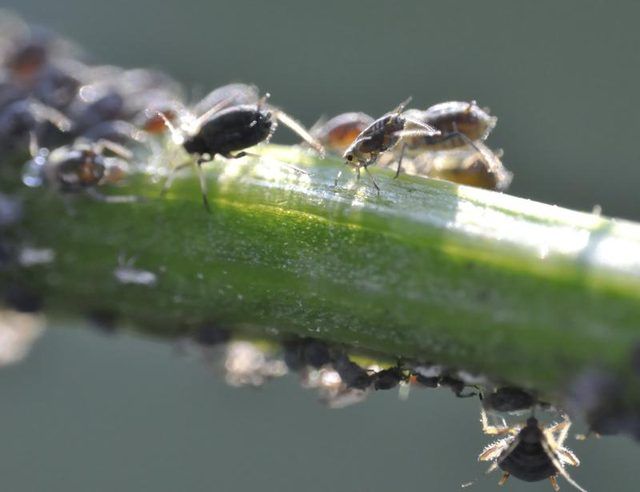Bulbs
Flower Basics
Flower Beds & Specialty Gardens
Flower Garden
Garden Furniture
Garden Gnomes
Garden Seeds
Garden Sheds
Garden Statues
Garden Tools & Supplies
Gardening Basics
Green & Organic
Groundcovers & Vines
Growing Annuals
Growing Basil
Growing Beans
Growing Berries
Growing Blueberries
Growing Cactus
Growing Corn
Growing Cotton
Growing Edibles
Growing Flowers
Growing Garlic
Growing Grapes
Growing Grass
Growing Herbs
Growing Jasmine
Growing Mint
Growing Mushrooms
Orchids
Growing Peanuts
Growing Perennials
Growing Plants
Growing Rosemary
Growing Roses
Growing Strawberries
Growing Sunflowers
Growing Thyme
Growing Tomatoes
Growing Tulips
Growing Vegetables
Herb Basics
Herb Garden
Indoor Growing
Landscaping Basics
Landscaping Patios
Landscaping Plants
Landscaping Shrubs
Landscaping Trees
Landscaping Walks & Pathways
Lawn Basics
Lawn Maintenance
Lawn Mowers
Lawn Ornaments
Lawn Planting
Lawn Tools
Outdoor Growing
Overall Landscape Planning
Pests, Weeds & Problems
Plant Basics
Rock Garden
Rose Garden
Shrubs
Soil
Specialty Gardens
Trees
Vegetable Garden
Yard Maintenance
How to Kill Aphids on Tomato Plants
How to Kill Aphids on Tomato Plants. A longing for the tangy-sweet flavor of fresh, home-grown tomatoes (*Lycopersicon esculentum*) leads many gardeners to pamper their ruby-fruited vines like spoiled children. When the tomatoes respond with lush new foliage, aphids often follow. Born female, pregnant and eager to populate every tomato within...

A longing for the tangy-sweet flavor of fresh, home-grown tomatoes (Lycopersicon esculentum) leads many gardeners to pamper their ruby-fruited vines like spoiled children. When the tomatoes respond with lush new foliage, aphids often follow. Born female, pregnant and eager to populate every tomato within crawling distance, the sap-feeding pests soon cover their hosts with gooey, ant-attracting waste. Killing an aphid colony requires first eliminating the ants.
Aphid ABCs
One pear-shaped, soft-bodied aphid on a tomato plant is tiny enough to avoid detection. That changes quickly, as it gives birth to up to 12 fully formed young each day. The nymphs begin feeding immediately and begin reproducing without mating in about a week.
Hordes of aphids soon line a tomato's tender young stems and the backs of its newly emerging leaves. Pale-green or yellow green peach aphids normally arrive in spring, followed six to eight weeks before harvest by much larger, grayish-pink or green potato aphids.
Aphids of all stages drain sap through their slender, needle-sharp mouths, digest its nitrogen and excrete the undigested portion as gooey, sugary honeydew. Sticky, distorted, wilting leaves are their signature.
Ants Love Aphids
Sugar-loving ants never say no to a free meal, and honeydew is among their favorite dishes. Streams of them flow up and down aphid-infested tomatoes to collect the goo for transportation back to their nests.
Like cowboys herding cattle, ants move the aphids to uninfested, sap-laden leaves or plants, stroke their abdomens to stimulate honeydew release, and attack their natural predators, such as parasitic wasps, lacewing larvae and ladybugs. Killing the aphids is easier after the ants are eliminated.
Axing the Ants
Evicting ants from their sugary Nirvana requires patience. Insecticide sprays only kill the ants on the tomatoes.Slow-acting ant bait works on entire ant colonies.
Line the ant trails beneath the tomato plants with enclosed, sugar-based boric acid ant baits. Ants on their way to and from the plants make a detour to pick up some of the bait and transport it back to their underground nests, where it kills the colonies in about a week.
Conceal the mildly toxic bait beneath leaves, where children and pets aren't likely to discover it.
Attacking the Aphids
Without ants to protect them, killing the aphids is relatively easy. Begin by rinsing the tomato plants with a hose sprayer attachment set to sharp spray. The pressure of the water knocks the insects off the stems and leaves, and those that don't drown aren't likely to reinfest the plants.
To discourage fungal disease, rinse the tomatoes early in the morning so the sun dries them quickly.
Killing large aphid populations may require organic, ready-to-use insecticidal soap. Because the soap works by suffocating the insects it hits, completely covering the plants is essential. On a calm, dry day with no rain in the 24-hour forecast and a temperature below 90 degrees Fahrenheit, water the tomatoes well and spray them until the soap drips from all their surfaces, including the backs of the leaves.
Repeat the soap application weekly, or as often as the manufacturer recommends, until the aphids are gone. Dress in protective clothing, including a long-sleeved shirt, long pants, safety glasses and waterproof gloves, and follow the label's directions when spraying.